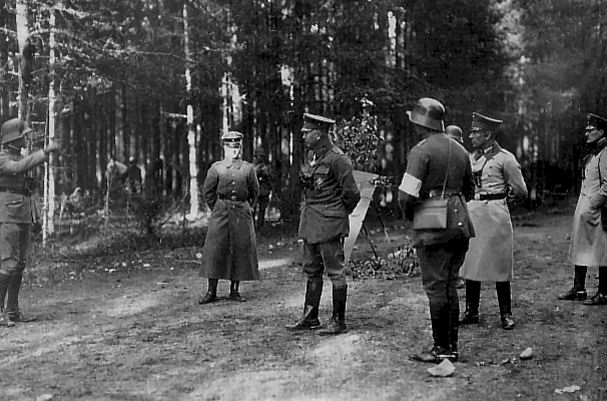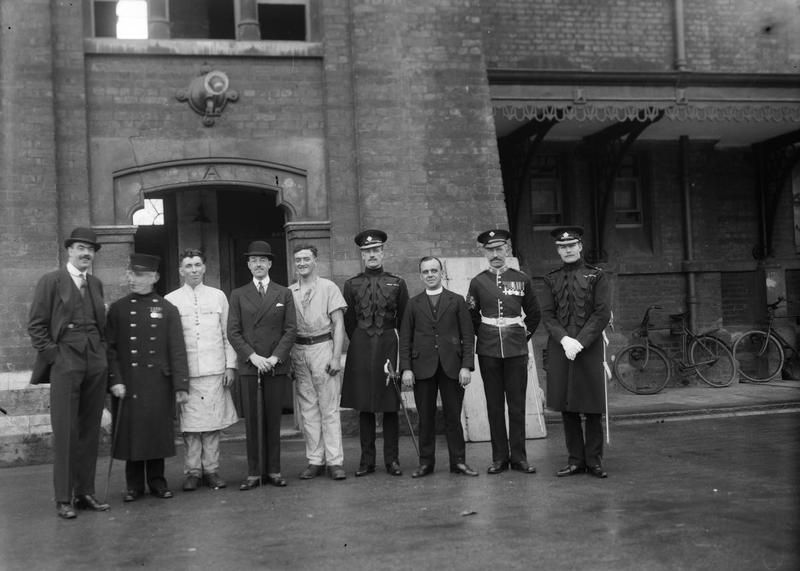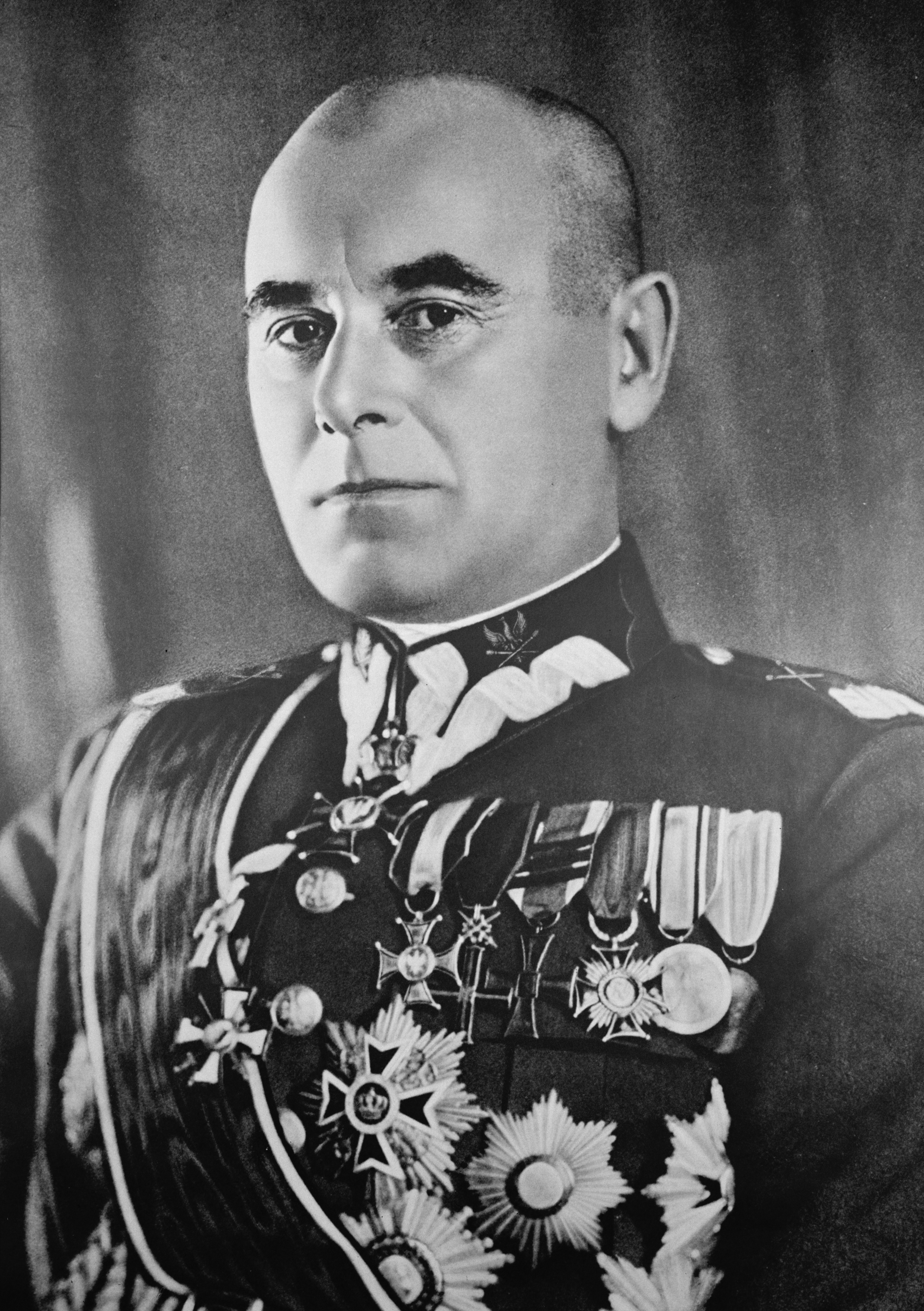|
Latvian War Of Independence
The Latvian War of Independence ( lv, Latvijas Neatkarības karš), sometimes called Latvia's freedom battles () or the Latvian War of Liberation (), was a series of military conflicts in Latvia between 5 December 1918, after the newly proclaimed Republic of Latvia was invaded by Soviet Russia, and the signing of the Latvian-Soviet Riga Peace Treaty on 11 August 1920. The war can be divided into a few stages: Soviet offensive, German-Latvian liberation of Kurzeme and Riga, Estonian-Latvian liberation of Vidzeme, Bermontian offensive, Latvian-Polish liberation of Latgale. The war involved Latvia (its provisional government supported by Estonia, Poland and the Western Allies—particularly the navy of United Kingdom) against the Russian SFSR and the Bolsheviks' short-lived Latvian Socialist Soviet Republic. Germany and the Baltic nobility added another level of intrigue, initially being nominally allied to the Nationalist/Allied force but attempting to jockey for German domi ... [...More Info...] [...Related Items...] OR: [Wikipedia] [Google] [Baidu] |
Russian Civil War
{{Infobox military conflict , conflict = Russian Civil War , partof = the Russian Revolution and the aftermath of World War I , image = , caption = Clockwise from top left: {{flatlist, *Soldiers of the Don Army *Soldiers of the Siberian Army *Suppression of the Kronstadt rebellion *American troop in Vladivostok during the intervention *Victims of the Red Terror in Crimea *Hanging of workers in Yekaterinoslav by the Austrians *A review of Red Army troops in Moscow. , date = 7 November 1917 – 16 June 1923{{Efn, The main phase ended on 25 October 1922. Revolt against the Bolsheviks continued in Central Asia and the Far East through the 1920s and 1930s.{{cite book, last=Mawdsley, first=Evan, title=The Russian Civil War, location=New York, publisher=Pegasus Books, year=2007, isbn=9781681770093, url=https://archive.org/details/russiancivilwar00evan, url-access=registration{{rp, 3,230(5 years, 7 months and 9 day ... [...More Info...] [...Related Items...] OR: [Wikipedia] [Google] [Baidu] |
Kārlis Ulmanis
Kārlis Augusts Vilhelms Ulmanis (; 4 September 1877 – 20 September 1942) was a Latvian politician. He was one of the most prominent Latvian politicians of pre-World War II Latvia during the Interwar period of independence from November 1918 to June 1940. He served four times as prime minister, the last time as the head of an authoritarian regime, during which he subsequently also adopted the title of President of Latvia. The legacy of his dictatorship continues to divide public opinion in Latvia today. Early life Born in a prosperous farming family, Ulmanis studied agriculture at the Swiss Federal Institute of Technology Zurich and at Leipzig University. He then worked in Latvia as a writer, lecturer, and manager in agricultural positions. He was politically active during the 1905 Revolution, was briefly imprisoned in Pskov, and subsequently fled Latvia to avoid incarceration by the Russian authorities. During this period of exile, he studied at the University of Nebraska� ... [...More Info...] [...Related Items...] OR: [Wikipedia] [Google] [Baidu] |
Josef Bischoff
Josef may refer to *Josef (given name) *Josef (surname) Josef is the surname of the following people: * Jens Josef (born 1967), German composer of classical music, a flutist and academic teacher * Michelle Josef (born 1954), Canadian musician and transgender activist *Mikolas Josef Mikoláš Josef ( ... * ''Josef'' (film), a 2011 Croatian war film * Musik Josef, a Japanese manufacturer of musical instruments {{disambiguation ... [...More Info...] [...Related Items...] OR: [Wikipedia] [Google] [Baidu] |
Alfred Fletcher
Alfred Fletcher (20 January 1875 Lampersdorf, Province of Lower Silesia, German Empire – 20 September 1959 Herzogenaurach, Bavaria, West Germany) was a German soldier, Major and politician. Life Fletcher fought as a soldier in World War I. After the capitulation in November 1918 he became active in the Baltic states as commander of the pro-German Baltische Landeswehr.Nigel Jones, The Birth of the Nazis: How the Freikorps Blazed a Trail for Hitler, Constable & Robinson, 2004, pp. 167-169 For a short while he was military governor of Riga. After the defeat of his forces in the Latvian war of independence, he returned to Germany and entered politics as a member of the German National People's Party The German National People's Party (german: Deutschnationale Volkspartei, DNVP) was a national-conservative party in Germany during the Weimar Republic. Before the rise of the Nazi Party, it was the major conservative and nationalist party in Wei .... References External li ... [...More Info...] [...Related Items...] OR: [Wikipedia] [Google] [Baidu] |
Baltic German
Baltic Germans (german: Deutsch-Balten or , later ) were ethnic German inhabitants of the eastern shores of the Baltic Sea, in what today are Estonia and Latvia. Since their coerced resettlement in 1939, Baltic Germans have markedly declined as a geographically determined ethnic group. However, it is estimated that several thousand people with some form of (Baltic) German identity still reside in Latvia and Estonia. Since the Middle Ages, native German-speakers formed the majority of merchants and clergy, and the large majority of the local landowning nobility who effectively constituted a ruling class over indigenous Latvian and Estonian non-nobles. By the time a distinct Baltic German ethnic identity began emerging in the 19th century, the majority of self-identifying Baltic Germans were non-nobles belonging mostly to the urban and professional middle class. In the 12th and 13th centuries, Catholic German traders and crusaders (''see '') began settling in the eastern B ... [...More Info...] [...Related Items...] OR: [Wikipedia] [Google] [Baidu] |
Rüdiger Von Der Goltz
Gustav Adolf Joachim Rüdiger Graf von der Goltz (8 December 1865 – 4 November 1946) was a German army general during the First World War. He commanded the Baltic Sea Division, which successfully intervened in the Finnish Civil War in the spring of 1918. Goltz stayed with his troops in Finland until December 1918 representing German interests, and in practice ruled the country as a military dictator during this period. After the Armistice of 11 November 1918, Goltz commanded the army of the local German-established government of Latvia, which in 1919 was instrumental in the defeat of the Russian Bolsheviks and their local allies in Latvia. The troops commanded by Goltz suffered a defeat against Estonia in 1919 and were eventually unsuccessful in retaining German control over Latvia and Estonia after World War I. Early life Born into Von der Goltz noble family in Züllichau, Brandenburg, he was the son of Count Gustav Albrecht von der Goltz (1831-1909) and his wife, Cäc ... [...More Info...] [...Related Items...] OR: [Wikipedia] [Google] [Baidu] |
Harold Alexander
Harold Rupert Leofric George Alexander, 1st Earl Alexander of Tunis, (10 December 1891 – 16 June 1969) was a senior British Army officer who served with distinction in both the First and the Second World War and, afterwards, as Governor General of Canada and the first Lord Lieutenant of Greater London in 1965. Alexander was born in London to aristocratic parents, and was educated at Harrow before moving on to the Royal Military College, Sandhurst, for training as an army officer of the Irish Guards. He rose to prominence through his service in the First World War, receiving numerous honours and decorations, and continued his military career through various British campaigns across Europe and Asia. In the Second World War, Alexander oversaw the final stages of the Allied evacuation from Dunkirk and subsequently held high-ranking field commands in Burma, North Africa and Italy, including serving as Commander-in-Chief Middle East and commanding the 18th Army Group in Tunis ... [...More Info...] [...Related Items...] OR: [Wikipedia] [Google] [Baidu] |
Edward Rydz-Śmigły
Marshal Edward Rydz-Śmigły (11 March 1886 – 2 December 1941; nom de guerre ''Śmigły, Tarłowski, Adam Zawisza''), also called Edward Śmigły-Rydz, was a Polish politician, statesman, Marshal of Poland and Commander-in-Chief of Poland's armed forces, as well as a painter and poet. During the interwar period, he was an exceptionally admired public figure in Poland and was regarded as a hero for his exemplary record as an army commander in the Polish Legions of World War I and the ensuing Polish–Soviet War in 1920. He was appointed Commander-in-Chief and Inspector General of the Polish Armed Forces following Marshal Józef Piłsudski's death in 1935. Rydz served in this capacity at the start of World War II during the invasion of Poland. When war loomed, political differences fell away and defense became the national priority. Consequently, Rydz's stature eclipsed even that of the president. The shock of the Polish defeat made objective evaluations of his legacy du ... [...More Info...] [...Related Items...] OR: [Wikipedia] [Google] [Baidu] |
Viktor Puskar
Viktor Puskar VR I/1 ( in Viljandi – 12 April 1943 in Tartu) was an Estonian military commander (Colonel) during the Estonian War of Independence. In 1911 he graduated from Vilnius Military Academy. Puskar participated in World War I, joining the Estonian national units in 1917. At the beginning of the Estonian War of Independence in 1918, Puskar was leader of the Järvamaa Estonian Defence League, Defence League. In December he became commander of the 2nd Division (Estonia), 2nd Division. During the war he successfully defended South Estonia, expelled the Red Army from North Latvia and captured Pskov. Puskar retired in 1920 and became a farmer. He was one of the leaders of the Vaps Movement and was in jail from 1936 to 1937, accused of underground activity. Puskar went to Germany in 1941, returning to Estonia after the Red Army had been driven out. He died in Tartu in 1943. See also *Estonian War of Independence The Estonian War of Independence ( et, Vabadussõda, li ... [...More Info...] [...Related Items...] OR: [Wikipedia] [Google] [Baidu] |
Ernst Põdder
Ernst-Johannes Põdder VR I/1 (10 February 1879 – 24 June 1932) was a famous Estonian military commander in the Estonian War of Independence. In 1900 Põdder graduated from the Vilnius Military Academy. In the Russo-Japanese war he achieved the rank of Lieutenant, and in World War I became Polkovnik (Colonel). In July 1917 he joined the Estonian national units as commander of the 3rd and 1st Estonian regiments. In 1918 Põdder was promoted to the rank of Major General. During the German occupation of 1918, he was one of the main founders of the underground Defence League. At the beginning of the Estonian Liberation War, Põdder was Chief of Internal Security. On April 4, 1919, he became Commander of the 3rd Division, where his main achievement was a victory over the Baltische Landeswehr. After the war, Põdder commanded the 3rd Division and, after 1921, the 2nd Division. He actively participated in defeating the 1924 coup attempt. In 1926 he became a permanent member of th ... [...More Info...] [...Related Items...] OR: [Wikipedia] [Google] [Baidu] |
Roberts Dambītis
General Roberts Dambītis (May 2, 1881 - March 27, 1957 in Trikāta parish near Strenči, Latvia) was a Latvian soldier and politician. A founder of the National Soldiers' Union as a Latvian Rifleman in World War I, Dambītis formally became the first soldier in the Latvian Army by placing volunteer units under the command of the People's Council of Latvia when it proclaimed Latvia's independence on November 18, 1918. He was subsequently appointed Deputy Minister of Defense during the Independence War. After the war he served in various high-ranking posts in military supply and administration, culminating in his appointment as Deputy Chief of the General Staff in 1935 and his retirement in 1939. In 1940, during the first year of Soviet Rule of Latvia, Dambītis joined the puppet government as Minister of War and oversaw the conversion of the Latvian Army to a Red Army Corps. He remained in Latvia after the retreat of the Red Army in 1941, was arrested by the Gestapo and interne ... [...More Info...] [...Related Items...] OR: [Wikipedia] [Google] [Baidu] |
Jorģis Zemitāns
Jorģis Zemitāns (23 February 1873, Skrīveri parish – 16 January 1928, Riga) was an army officer and commander of the Latvian Northern Brigade during the Latvian War of Independence. Biography Jorģis Zemitāns was born on 23 February 1873 in Skrīveri parish, Livonia Governorate. In 1892 he graduated Realschule in Mitau (Jelgava) and joined the army of the Russian Empire in 1892 and completed his military education at the Vilnius Military Academy in 1897. He became an officer in 116th. Malojaroslavec infantry regiment which was stationed in Riga. World War I When World War I started in 1914 he was promoted to captain and together with the whole regiment deployed to the front. Together with XX Army corps he fought in East Prussia. In January 1915, the entire XX Army corps was destroyed in the Augustów forest's and Zemitāns was taken Prisoner of War in February 1915. He spent the remainder of the war in the German POW camps and was released from captivity in December ... [...More Info...] [...Related Items...] OR: [Wikipedia] [Google] [Baidu] |




